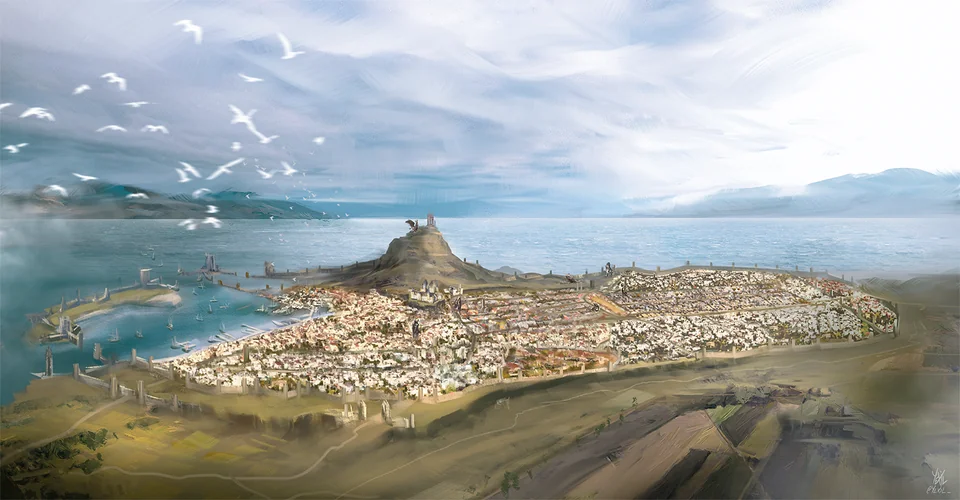Beshaba (be-SHAH-ba)
The Maid of Misfortune, Lady Doom, Black Bess
Beshaba is the counterpoint to Tymora and is just as frequently acknowledged in daily life as is her more benevolent “sister.” She is seen as a cruel and capricious goddess who must be propitiated to avoid attracting her attention and interest in a negative way.
Beshaba’s name is invoked when someone is beset by bad luck — which could be as minor as stubbing a toe or breaking a wagon wheel, or as catastrophic as slipping and accidentally falling off a cliff. It is also invoked to ward off her attentions when someone is doing something in which good luck wouldn’t play a part but bad luck might. For example, someone rolling dice would invoke Tymora because they want random chance to fall in their favor, but someone about to cross a rickety bridge would ask Beshaba to keep the bridge intact.
Folk make the symbol of Beshaba by folding in their thumbs and extending their fingers on one or both hands (mimicking the horns of her holy symbol) to ward off misfortune. The same gesture raised to the head signifies a salute; when pointed at someone, the “horns” indicate ill favor directed toward that individual.
Many druids worship Beshaba as one of the First Circle. They propitiate her with dances while wearing fire-blackened antlers dipped in blood. According to these druids, her holy symbol is the horns of a stag because when Beshaba was first worshiped, humans were simple hunter-gatherers and she was believed to bring misfortune to hunters, such as being gored by a stag.
Although most people tremble in fear at the prospect of Beshaba’s attendance at any event (even in spirit), Beshaba is almost always invoked and welcomed formally in the opening speeches or ceremonies of formal functions such as marriages and coronations, contests of sport or martial prowess, and at the naming ceremonies of children. If she isn’t invited to such an event, she might take offense and wreak misfortune on those involved.
Temples to Beshaba are virtually unknown. It’s common, however, for rural folk to erect a post and mount antlers on it at the site of some roadside accident or murder. In cities, where antlers are hard to come by and murders and accidents more prevalent, the fashion is to draw the black antlers of Beshaba with charcoal on a nearby wall, leaving the symbol on display until weather scours it away. These “shrines,” in either form, serve as warnings to others about places of ill fortune.
More formal shrines to Beshaba exist in places where folk frequently hope to ward off misfortune. These sites tend to be posts or stones painted red with blackened antlers attached to them, or a red, triangular wall-mounted plaque with attached antlers. Both types have a stone or bronze bowl where coins can be tossed or burnt offerings made. The Red Wizards of Thay commonly erect such shrines outside their ritual chambers to guard against unfortunate mistakes.
Few dare to take Beshaba as a patron. The rare clerics of the Maid of Misfortune are those who have been deeply affected by great misfortunes and who seek to warn others of the essential unfairness of life — or to inflict that unfairness upon them.
Relationships

Divine Classification
Alignment
CE
Spouses
Siblings
Children
Aligned Organization

